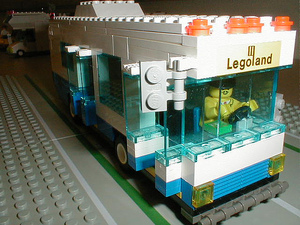
 Ann Pelo and Kendra Pelojoaquin published an interesting article in Rethinking Schools Online titled Why We Banned Legos. The long-ish piece details their introduction of Lego bricks into their after-school program as collaborative exercise, and the reasons behind their eventual decision to banish the building toy.
Ann Pelo and Kendra Pelojoaquin published an interesting article in Rethinking Schools Online titled Why We Banned Legos. The long-ish piece details their introduction of Lego bricks into their after-school program as collaborative exercise, and the reasons behind their eventual decision to banish the building toy.
Carl and Oliver,* both 8-year-olds in our after-school program, huddled over piles of Legos. They carefully assembled them to add to a sprawling collection of Lego houses, grocery stores, fish-and-chips stands, fire stations, and coffee shops. They were particularly keen to find and use "cool pieces," the translucent bricks and specialty pieces that complement the standard-issue red, yellow, blue, and green Lego bricks.
"I’m making an airport and landing strip for my guy’s house. He has his own airplane," said Oliver.
"That’s not fair!" said Carl. "That takes too many cool pieces and leaves not enough for me."
"Well, I can let other people use the landing strip, if they have airplanes," said Oliver. "Then it’s fair for me to use more cool pieces, because it’s for public use."
Discussions like the one above led to children collaborating on a massive series of Lego structures we named Legotown. Children dug through hefty-sized bins of Legos, sought "cool pieces," and bartered and exchanged until they established a collection of homes, shops, public facilities, and community meeting places. We carefully protected Legotown from errant balls and jump ropes, and watched it grow day by day.
After nearly two months of observing the children’s Legotown construction, we decided to ban the Legos.
It’s a fascinating — and slightly disturbing — piece from the perspective of a parent. The Lego aspect is actually kind of secondary, but it’s interesting to see how plastic bricks became a scarce and valued resource as the classroom Legotown grew and prospered, and how that led some kids to positions of power while leaving others on the fringes. My natural tendency is to think of kids as more or less egalitarian up to a certain age. That may be farther off the mark than I’d like to believe.
Note for the Lego fans amongst us: The bricks were eventually reintroduced, with specific rules (drawn up by the kids) designed to limit individuals’ ability to gain and hold influence by "cornering the market" on certain types of bricks and structures, and to enhance everyone’s ability to participate.
Image by William Ward.

